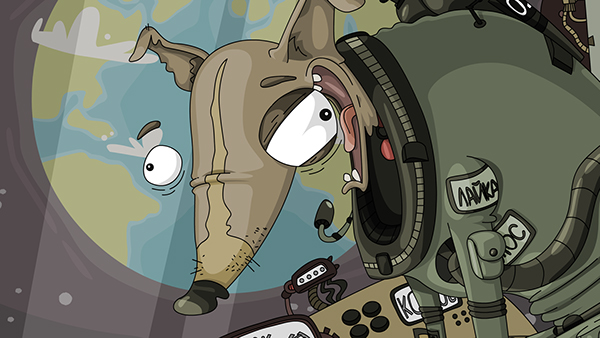
“The more time passes, the more I’m sorry about it.

Gazenko, who died in 2007, carried the guilt of sending Laika to her death for decades. She lived out the rest of her life with his family for 14 years.

Three years after her launch, Gazenko adopted a dog from another space mission – Krasavka. Despite being responsible for her planned demise, his paradoxical devotion to her was so strong that he insisted on a window being installed in the pressurized capsule - so that she could have a view in her confinement. Oleg Gazenko, one of the lead Soviet scientists on the project, developed a bond with Laika during her training. In New York, dog lovers protested in front of the UN building with signs like “Pick on someone your own size.”Īltogether, the USSR sent 48 dogs into space. In the UK, the Royal Society for the Prevention of Cruelty to Animals encouraged protests at the Soviet embassy in London, and the British Society for Happy Dogs called for a minute of silence for Laika. The space shuttle was designed to not be retrievable. Oblivious to the plans set in place for her, Laika unequivocally trusted her caretakers, who ended up betraying her. It included standing still for long periods of time, wearing space suits, being placed in simulators that replicated the high acceleration of a rocket launch and being kept in progressively smaller cages to prepare her for the confines of the space module. She was launched on Sputnik 2 as part of the Soviet space exploration program, with the USSR locked in a heated race against the United States to conquer space.Ī stray mutt from the streets of Moscow, Laika was described as being calm and quiet, complying obediently with her training. By the fourth orbit, some five hours into the flight, Laika’s telemetrics went silent, ending the life of the first living being in space.įour years later, Yuri Gagarin accelerated the Soviet’s lead in the Space Race, when the cosmonaut orbited the earth for 108 minutes, before parachuting from his capsule after re-entry into the earth’s atmosphere.On November 3, 1957, Laika became the first living being to orbit the Earth. By Laika’s second orbit, a gross miscalculation in thermodynamics caused the space capsule to become increasingly overheated. While the Soviet space program learned much about mammalian physiology in space, Sputnik 2 was so hastily assembled that the program had no plan to safely return Laika to earth.

Once in space, Laika’s breathing and heart rate grew slower and deeper, despite the deteriorating conditions inside the tiny capsule. On launch day, telemetric sensors recorded a threefold increase in Laika’s heart rate, while the g-forces during liftoff caused the animal’s respiratory rate to increase fivefold. On November 3rd, 1957, Laika the dog would become the first living being ever to be launched into space. Khrushchev’s order left Soviet scientists with less than a month to accomplish the feat. Chosen for her ability to withstand centrifugal g-forces and a superior aptitude for sitting, eating and going to the bathroom in a confined space, Laika would soon be the first living creature to be launched into space.Īfter the historic and quite polarizing launch of Sputnik 1, which instantly ignited the Cold War Space Race between the United States and the Soviet Union, Russian leader Nikita Khrushchev ordered a second triumphant space flight to celebrate the 40th anniversary of the Bolshevik Revolution. Laika the dog, the commander of Sputnik 2, grew up on the streets of Moscow, possessing little vision about being the first living creature in space.


 0 kommentar(er)
0 kommentar(er)
